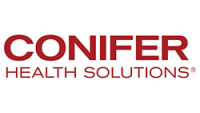Decoding revenue cycle management: Top coding questions providers ask
Quality coding is vital to a healthy revenue stream. Each member of the coding team must possess the skills and knowledge necessary to capture detailed and precise information regarding patient encounters, procedures, diagnoses and treatments. Because incorrect coding falls under the “fraud and abuse” category of the American Medical Association’s Principles of CPT Coding, penalties can run into hundreds of thousands of dollars and include incarceration.
Recently, Conifer Health polled provider organizations to discover their top concerns and answer their most pressing questions. The following is an outline of the results.
Maintaining accurate documentation. The top type of question received concerned how to achieve and maintain accurate documentation. Clinical documentation improvement (CDI) is critical to quality coding, and the best approach is to designate a provider champion to lead the effort. Having peer-to-peer accountability heeds more significant results in coding accuracy. However, when that is not possible, an identified physician champion (somewhat like a board member) [DF1] who helps engage other physicians and all other functions is a good alternative. If that is not a viable solution, revenue cycle managers should consider having one-on-one meetings to build direct relationships with their organization’s providers.
Providers’ top concerns
Documentation audits and sample sizes. The second biggest question addressed how to choose sample sizes for audits and if there are any industry standards to aim for. The best way to determine a percentage range depends on coding volume and the type of system a hospital is using. For example, if a hospital is coding 1,000 claims and the sample size is 10%, then that would be an appropriate baseline to follow. If a provider is coding 100 claims and the sample size is 10%, that may be too much. Hospitals should take into consideration the volume of auditing their staff can handle.
Handle denial codes. The third most-asked type of question was if there is a reliable crosswalk [DF2] of denial codes across various pairs. [DF3] Unfortunately, the answer is, “Not specifically.” Although we often see a certain remark code that takes a coder down a specific path, once they have spent time working the denial, they often discover the reason is entirely unrelated to the initial remark code. This is just another reason why working denials is exceptionally challenging and why having skilled, highly trained professionals is so important.
Skill assessment. Another popular question was on how to find good people with the right skill level to manage a coding program. When interviewing candidates, managers should look for staff with significant accounts receivable experience. Using production assessments as part of the interview process can provide insight into a candidate’s baseline knowledge. Another very successful approach is to create a career ladder within the organization. This encourages and incentivizes coders to continue their professional development, which in turn benefits the hospital.
Quality assurance for auditors. The fifth question was about determining the appropriate guardrails to use when managing auditor quality. First and foremost, it is vital to have an established compliance team responsible for auditing the auditors. Second, it is crucial to develop clear lines of communication between the coding and auditing teams. This can help managers better navigate any discrepancies and will increase the value and quality of both teams.
Role of AI in coding. Not surprisingly, individuals were concerned about whether AI has the potential to replace current coding positions. The good news is that some very effective AI auditing software solutions are available that can streamline coding processes significantly, which elevates productivity and quality while making a coder’s job easier. With the ever-changing regulatory landscape, these solutions are unlikely to completely replace the human element; all claims must still be reviewed and approved for billing. In short, coders and auditors will continue to be incredibly valuable to hospitals.
Manage denial mistakes. The next question was about which mistakes associated with denials are the most expensive[DF4] . The costliest mistake is not proactively addressing and monitoring denials in the first place. Many times, long-established processes [DF5] are expected to just run smoothly; any reviews or adjustments are made only when an issue comes up. In this approach, when one problem is fixed, another often pops up.
Reports from coding vendors. The next question highlights the lack of transparency that often exists between providers and their coding vendors and was about which reports revenue cycle managers should expect from their vendors. The answer is [DF6] twofold. All coding vendors should be able to complete their own quality reports, and these reports should include any issues they are seeing on their side. Production reports are also vital to identify issues with consistency, downtimes, etc. While not a report per se, providers should request an overview of the type of education and training vendors use to achieve and maintain optimal coding quality and ongoing regulatory compliance.
Benchmark coding accuracy. The final question concerned the level of coding accuracy that should be used as an industry benchmark for internal and external auditors. While providers should strive for 97% accuracy, 95% is the absolute minimum they should expect from themselves or their coding vendors.
Putting it all together
Hospitals are facing unprecedented challenges caused by inflation, skyrocketing costs and ongoing labor shortages. In response, many have turned to layoffs and shuttering entire service lines. Before taking such drastic measures, hospitals should consider reevaluating processes that directly impact their revenue streams. Coding is a prime opportunity. By streamlining these processes and elevating coding quality, hospitals can reduce costs, enhance staff productivity and ensure more timely, accurate reimbursements.






